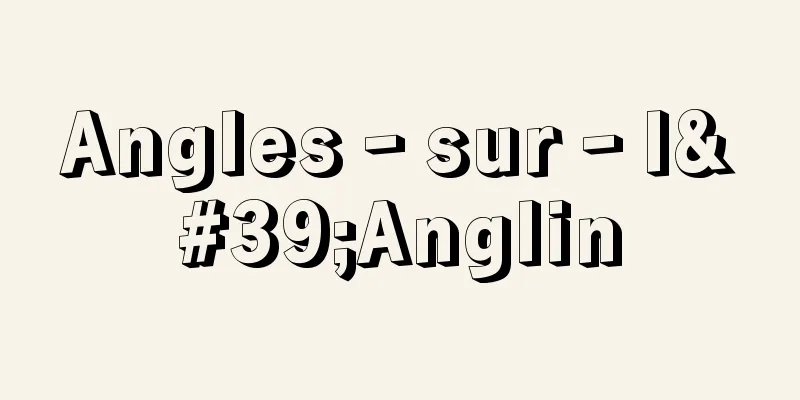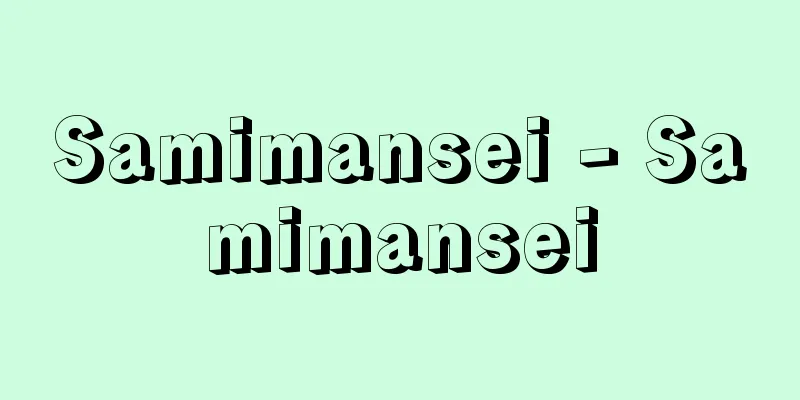Configuration - Rittaihaichi (English) configuration

|
The spatial arrangement of atoms or atomic groups bonded to an asymmetric atom in a molecule. To explain it with a simple example, an asymmetric atom is an atom that has no plane of symmetry or center of symmetry, such as a carbon atom with four different substituents. If there is one asymmetric atom, there are two stereoconfigurations that correspond to a pair of optical antipodes (enantiomers), so if there are n asymmetric atoms, the number of stereoconfigurations is a maximum of 2n . However, if the atoms or atomic groups bonded to the asymmetric atoms are the same, there are fewer than 2n stereoconfigurations. Since there are optical isomers corresponding to each stereoconfiguration, the number of stereoconfigurations and the number of optical isomers (including meso isomers) are equal. shows the stereoconfigurations of tartaric acid, which has two asymmetric carbon atoms. To display the stereoconfigurations, the Fischer projection based on the "tetrahedral theory" of carbon valence is used. In configuration, rotation around the carbon-carbon single bond (CC) is considered to be free, and no differences in conformation are distinguished; only differences in the arrangement of atoms (groups) around the asymmetric atom, which cannot be matched by rotation around a single bond, are distinguished ( ). In the past, the symbols d (dextro-rotatory) and l (levo-rotatory) based on the sign of optical rotation were used to indicate the difference in the configuration of optical antipodes, but later the symbols D and L based on the three-dimensional arrangement around the asymmetric carbon of sugars or amino acids came to be used. Nowadays, the symbols d and l for optical rotation are gradually falling out of use, and dextrorotatory (+) and levorotatory (-) are now used at the beginning of the compound name. Since it has become known that optical rotation is not caused by individual asymmetric carbon atoms alone, but is a phenomenon that occurs when the symmetry of the entire molecule is lost (optical rotation appears when a molecule has no symmetric plane, center of symmetry, or n -fold axis of rotation), a method of indicating the configuration based on the three-dimensional arrangement that all asymmetric molecules, including those without asymmetric carbon atoms, actually take has come to be used. This is the " RS notation" (also called the "CIP method" after the initials of the three people's names) by Robert Sidney Cahn (1899-1981), Ingold, and Prelog, which is recommended by the International Union of Pure and Applied Chemistry (IUPAC). The configuration by this method is called "absolute configuration" because it is determined by the three-dimensional arrangement that the asymmetric molecule actually takes, and all asymmetric molecules are assigned to the ( R ) or ( S ) configuration by the method shown in In , in the molecule Xabcd, if the order of the atoms bonded to the asymmetric center X is a>b>c>d, when d is placed on the side farther from the viewer, if the arrangement of abc is clockwise, it is assigned to ( R ), and if it is counterclockwise, it is assigned to ( S ). The order of the atoms is determined by the "order rules", which can be roughly thought of as the order of the atomic weights of the atoms that make up the substituents, and when the directly bonded atoms are the same type, the second closest atom is compared. The R used in this nomenclature comes from the Latin rectus, meaning right, and the S comes from sinister, meaning left. Geometric isomers (cis-trans isomers) about C=C double bonds, etc., are also handled using this notation as differences in configuration. [Mr. Hirota November 18, 2016] "New Chemistry Library: Stereochemistry" by Kaoru Harada and Jintai Hidaka (1986, Dainippon Tosho)" ▽ "Stereochemistry, 4th Edition, by Michinori Ohki (2002, Tokyo Kagaku Dojin)" ▽ "Tutorial Chemistry Series 2: Basics of Stereochemistry" by David G. Morris, translated by Tsutomu Ishikawa (2003, Kagaku Dojin)" [References] | | | | | | |©Shogakukan "> Representation of the configuration of tartaric acid (Figure A) ©Shogakukan "> Difference between configuration and conformation [Figure B] ©Shogakukan "> How to determine the configuration using the RS notation method (Figure C... Source: Shogakukan Encyclopedia Nipponica About Encyclopedia Nipponica Information | Legend |
|
分子の中にある不斉(ふせい)原子に結合している原子または原子団の空間的配列をいう。簡単な例をあげて説明すると、不斉原子とは、四つの異なる置換基をもつ炭素原子のように対称面も対称中心ももたない無対称な原子である。不斉原子が1個あると一対の光学対掌体(エナンチオ異性体)に相当する2種の立体配置があるので、不斉原子がn個あると立体配置の数は最大2n個になる。しかし、不斉原子に結合している原子または原子団が同じである場合には、2n個より少ない立体配置しかもたない。立体配置のそれぞれに対応する光学異性体が存在するので、立体配置の数と光学異性体(メソ体を含む)の数は等しくなる。に不斉炭素原子2個をもつ酒石酸の立体配置を示す。立体配置を表示するには、炭素の原子価の「正四面体説」に基づいたフィッシャー投影式が用いられている。立体配置では炭素‐炭素単結合(C-C)の周りの回転は自由であるとみなし、立体配座の違いはいっさい区別せず、単結合の周りの回転では一致させることができない不斉原子上の原子(団)の配列の違いだけを区別している()。 光学対掌体の立体配置の違いを表示するのに、古くは旋光性の符号に基づく記号d(右旋性dextro-rotatory)とl(左旋性levo-rotatory)が用いられていたが、のちには糖またはアミノ酸の不斉炭素の周りの立体的配列に基づくDとLの符号が用いられるようになった。現在では、旋光性のdとlを用いた表示はしだいに使われなくなり、右旋性は(+)、左旋性は(-)を化合物名の最先頭につけて表すようになった。旋光性は個々の不斉炭素原子だけが原因ではなく、分子全体の対称性が失われるとおこる現象である(分子が対称面、対称の中心、n回回映軸のいずれももたない場合に旋光性が現れる)ことが知られてきたので、不斉炭素原子がない不斉分子を含むすべての不斉分子が実際にとっている立体的な配列を基にして表示する立体配置の表示法が使われるようになった。これが国際純正・応用化学連合(IUPAC:International Union of Pure and Applied Chemistry)により推奨されているカーンRobert Sidney Cahn(1899―1981)、インゴルド、プレローグによる「RS表示法」(3人の名前の頭文字をとって「CIP法」ともいわれる)である。この方法による立体配置は、不斉分子が実際にとっている立体的な配列により決められるので「絶対立体配置」といわれ、に示した方法で、すべての不斉分子は(R)または(S)立体配置に帰属される。では、分子Xabcdで、不斉中心Xに結合している原子の順位がa>b>c>dである場合に、dを見る人より遠い側に置いたときのabcの配列が右回りであれば(R)、左回りであれば(S)と帰属することになる。原子の順位は「順位則」で決められ、大まかには置換基を構成する原子の原子量の順序と考えてよく、直接結合している原子が同種の場合には2番目に近い原子を比較することになる。この命名法で使われているRはラテン語で右を意味するrectus、Sは同じく左を意味するsinisterに由来する。 C=C二重結合などについての幾何異性体(シス‐トランス異性体)も立体配置の違いとしてこの表記法により取り扱われている。 [廣田 穰 2016年11月18日] 『原田馨・日高人才著『新化学ライブラリー 立体化学』(1986・大日本図書)』▽『大木道則著『立体化学』第4版(2002・東京化学同人)』▽『David G. Morris著、石川勉訳『チュートリアル化学シリーズ2 立体化学の基礎』(2003・化学同人)』 [参照項目] | | | | | | |©Shogakukan"> 酒石酸の立体配置の表示〔図A〕 ©Shogakukan"> 立体配置と立体配座の違い〔図B〕 ©Shogakukan"> RS表示法による立体配置の決め方〔図C… 出典 小学館 日本大百科全書(ニッポニカ)日本大百科全書(ニッポニカ)について 情報 | 凡例 |
<<: Rich, Richard, 1st Baron Rich
>>: Conformation - Rittaihaiza (English spelling) conformation
Recommend
Youth Protection and Development Ordinance - Seishounen Hogoikusei Jorei
Ordinances enacted by local governments (municipa...
Rehmannia japonica (English spelling) Rehmannia japonica
…[Nitta Aya]. . . *Some of the terminology that r...
Upsilon (English spelling) Υ/υ/upsilon
(Also known as "Upsilon") 1. Υ, υ: The 2...
Black teeth - Ohaguro
{"teeth blackening" is a woman's wor...
Illyés Gyula
1902‐83 Hungarian poet. When the Hungarian Republi...
Voltage tester - Kendenki
A highly sensitive device that detects the presen...
Metal cutting saw - Kanakiri no koban
A machine tool used to cut metal materials. There ...
Ken Tsuchida
?-? A doctor in the late Edo period. He studied m...
Cabinet of Prime Minister Katayama
(May 24, 1947 - March 10, 1948, Showa 22-23) A ce...
Layman - Koji
In China, it means a virtuous man who is not in g...
House of Savoy - Savoia (English spelling)
A noble family in northern Italy. They first becam...
Tear film
…These cells are essential for the transparency o...
Wallerstein, I.
…Plantation Economic Development Neocolonialism [...
Inari God - Inarigami
However, among the mountain stonemasons who quarr...
Tissue paper (chirigami) - Chirigami
In handmade washi paper, the word "chiri"...






![Nawa [town] - Nawa](/upload/images/67cc69462d708.webp)


